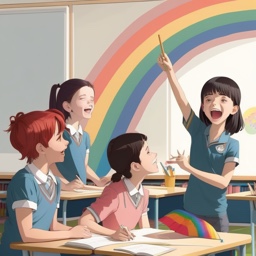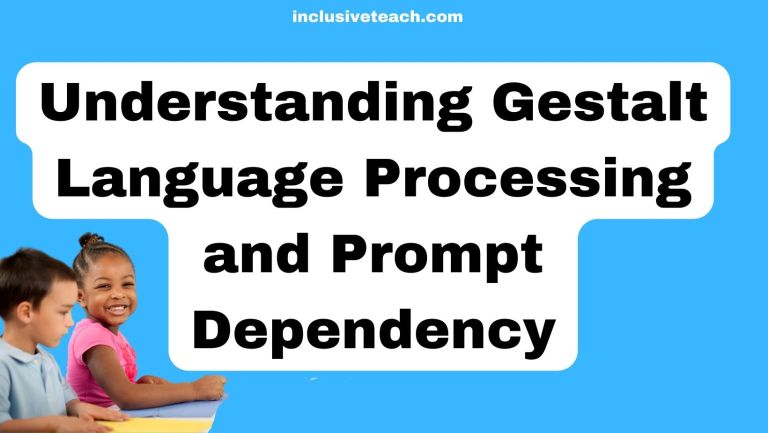SEN Teacher: Proving The Value of Learning
Showing Autistic Pupils that Learning Has Value: A Guide for Special Education Teachers
Any new special education teacher faces the unique challenge of catering to the diverse needs of your students. I have spent my career supporting Autistic pupils who will require specialised approaches to learning. One of the most important tasks, and one that is often overlooked in ITT programmes, is demonstrating the value and benefits of learning to these pupils. We talk about engagement and being ready to learn in other posts. However, the key element that is harder to capture is demonstrating the value of learning to pupils with varied and complex Special Educational Needs. This post will help you create a positive learning environment in your classroom where students feel motivated, engaged, and confident in their abilities.

In this article, we will explore strategies and techniques that can help you show your autistic pupils that learning has value. We will discuss the importance of individualised learning, the role of special interests, and the power of visual aids, among other topics. Our post on SEN teaching methodologies may help if you want to know more about inclusive teaching practices.
1. Emphasise Individualised Learning
Every pupil is unique, with their own strengths, challenges, and interaction preferences. Many of the pupils I have worked with have had a negative experience of education in previous placements. It is crucial to provide individualised support and accommodations, as this will not only make learning more accessible but also demonstrate its value. The “What’s the point?” element of the day. This can be really important for pupils whose intrinsic motivation is still being developed. The EEF have a paper of the impact of non-cognitive skills on outcomes which ties in with the ideas we will discuss in this post.
- Get to know your students. Spend time understanding their individual strengths, challenges, and special interests. This will enable you to tailor your teaching methods to their specific needs and interests.
- Differentiate instruction. Modify your teaching methods to cater to different learning styles. This may involve using visual aids, hands-on activities, or technology to make the learning experience more engaging.
- Provide clear and simple instructions. Break down complex tasks into smaller, manageable steps. This can help autistic pupils understand the process better and see the value in completing the task.
- Set realistic, attainable goals. Collaborate with your students to set goals that are both challenging and achievable. By setting goals that are within their reach, students will be more likely to feel a sense of accomplishment and see the value in their learning.
2. Build on Special Interests
Many autistic individuals have special interests, which are topics or activities they are deeply passionate about. Integrating these interests into the learning process can be a powerful way to engage students and demonstrate the value of learning.
- Incorporate special interests into lessons. Find creative ways to include students’ special interests in your lesson plans. For example, if a student loves trains, you could use trains as a theme for a math lesson on counting or a reading exercise. For older pupils research, timetables and even DT can be taught through this.
- Use special interests as motivation. Offer opportunities for students to explore their special interests during class time or as a reward for completing tasks. This can help them see the connection between their efforts and the opportunity to engage in something they enjoy.
- Encourage peer interaction. Provide opportunities for students to share their special interests with their classmates. This can foster a sense of belonging and help students see the value in learning from and with others.
3. Utilise Visual Aids and Supports
Visual aids can be particularly beneficial for autistic pupils, as they often process information more effectively through visual means. Using visual aids can help students understand concepts more easily and see the value in learning.
- Create visual schedules. Use visual schedules to outline the day’s activities and help students anticipate and prepare for transitions. This can reduce anxiety and demonstrate the value of organisation and planning.
- Use graphic organisers. Graphic organisers, such as mind maps or flowcharts, can help students organise information visually. This can make complex concepts more accessible and success in recall of information (Bethune & Wood 2013) can help students see the value in learning. When combined with systematic instruction one study found these to be effective (Knight et al 2013)
- Incorporate visual cues. Use visual cues, such as symbols or pictures, to support verbal instructions. This can help students understand expectations and facilitate communication. Dual-coding theory explains this effect by suggesting that pictures are encoded both visually and verbally, while words are encoded only verbally. This dual encoding helps pupils in their recall of information. (Paivio, 1991)
4. Encourage Active Participation
Active participation in the learning process can help students feel more invested in their education and see the value in learning.
- Offer choices. Allow students to make choices about their learning whenever possible. This can give them a sense of control and ownership over their education.
- Promote collaboration. Encourage students to work together on projects or activities. This can help them develop social and communication skills, as well as demonstrate the value of learning from others.
- Provide opportunities for self-expression. Encourage students to express their thoughts and feelings through creative outlets, such as art, music, or writing. This can help them see the value in learning as a means of self-discovery and personal growth. Schweizer et al. (2019) demonstrated that interventions involving creative arts are useful and effective supports for autistic children.
- Promote Curiosity. Curiosity is such a powerful tool to motivate pupils to learn in your classroom. Our post on igniting curiosity in your class goes into more detail about how to do this.
5. Celebrate Success
Recognising and celebrating students’ achievements can help them see the value in their efforts and motivate them to continue learning.
- Acknowledge progress. Regularly provide feedback on students’ progress and celebrate their accomplishments, no matter how small.
- Create a positive learning environment. Foster an atmosphere of encouragement, support, and collaboration. This can help students feel safe and valued, and more likely to see the value in learning.
- Encourage self-reflection. Help students reflect on their achievements and set new goals for themselves. This can promote a growth mindset and help students see the value in continuous learning and improvement.
Showing autistic pupils that learning has value involves a multifaceted approach. By employing the strategies in this post, you can create an inclusive, engaging, and supportive learning environment that enables autistic students to thrive academically and personally. Teaching with patience, creativity, and empathy, you can empower them to reach their full potential and truly appreciate the value of learning.
References:
Bethune, Keri & Wood, Charles. (2013). Effects of Wh-Question Graphic Organizers on Reading Comprehension Skills of Students with Autism Spectrum Disorders. Education and Training in Autism and Developmental Disabilitites. 48. 236-244.(Accessed Online May 2023)
Knight, V. F., Spooner, F., Browder, D. M., Smith, B. R., & Wood, C. L. (2013). Using Systematic Instruction and Graphic Organizers to Teach Science Concepts to Students With Autism Spectrum Disorders and Intellectual Disability. Focus on Autism and Other Developmental Disabilities. https://doi.org/10.1177/1088357612475301 (accessed Online May 2023)
Paivio, A. (1991). Dual coding theory: Retrospect and current status. Canadian J. Psychology, 45, 255–287.
Schweizer, C., Knorth, E. J., Van Yperen, T. A., & Spreen, M. (2019). Consensus-based typical elements of art therapy with children with autism spectrum disorders. International Journal of Art Therapy, 24(4), 181-191. (Accessed Online May 2023)







One Comment